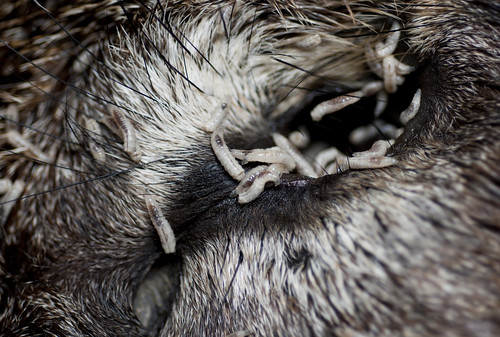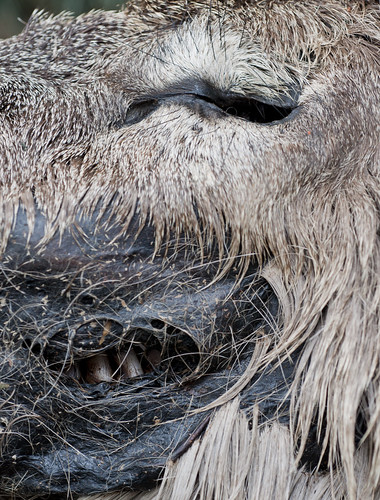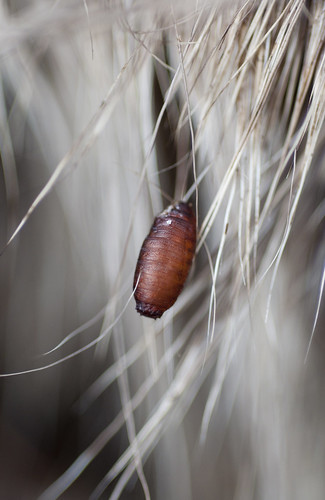In the days since, the maggot activity has noticeably lessened — at least, from the outside. One reason for this is that the birds have been using the larvae as an all-you-can-eat buffet! I've spotted robins, sparrows, and warblers all within the vicinity of the buck head, and they've been leaving behind their droppings nearby.
The weather has been ridiculously irregular, with fluctuating temperatures and, oftentimes, a chill blowing in from Lake Superior. Since warm weather hasn't been a constant, it has also hampered the progress of the maggots. Still, they're eating away at their host, from the inside out:
Quite a bit of fur has fallen from the skin — which, yesterday, had a rather darkened, desiccated appearance. Some areas of the skin have been eaten away entirely, which is apparent in the photograph above: the buck's lower molars are visible! The inside of the head has liquefied into an indiscernible, spongy mess; the tongue has dried up; the top of the head, where there is no muscle for the fly larvae to eat, looks relatively unchanged.
There is one other reason the numbers of maggots have lessened: they're pupating!
Buried beneath the head and tucked into its skin and fur are fly pupae. Soon, they will emerge as adults, and will likely lay their eggs on the very same host that they fed upon as larvae.
See also: A Dead Animal Sampler (March 15, 2013), Cold Decay (April 22, 2013), and Fly Portraits (April 27, 2013).







These are absolutely amazing shots... So strangely beautiful.
ReplyDelete